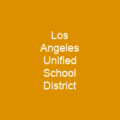Chicago Public Schools: A Monumental Journey Through Education
Imagine a city where the future of its children is shaped by the walls of over 634 schools, serving more than 323,000 students. That’s Chicago Public Schools (CPS), the fourth-largest school district in the United States. CPS has been a cornerstone of education for generations, but it’s not just about numbers; it’s about dreams and aspirations. How does such an institution navigate through challenges while striving to uplift its community?
The Numbers Game
Is 84% graduation rate impressive? What about the student-teacher ratio of 15.84? These figures tell a story, but they don’t capture the essence of what CPS truly is.
CPS reported an 84% graduation rate for the 2022-23 school year, with a student-teacher ratio of 15.84. However, these statistics only scratch the surface. The district serves students from economically-disadvantaged households, with 63.8% coming from these backgrounds. This means that CPS is not just about numbers; it’s about providing opportunities to those who need them most.
Historical Milestones
When did CPS first allow equal access to libraries for all races? How did a polio outbreak in 1937 impact the district?
In 1922, CPS changed its policy to allow equal access to libraries for all races. This was a significant step towards inclusivity and equality. Fast forward to 1937, when a polio outbreak led to a three-week closure of schools, which were reopened through radio broadcasts. These events highlight the resilience and adaptability of CPS in times of crisis.
Challenges and Triumphs
Has CPS faced declining enrollments and school closings? How did Renaissance 2010 impact the district?
CPS has indeed faced challenges, including declining enrollments and school closings. From 2001 to 2009, the district closed dozens of schools citing low capacity or underperformance. The Renaissance 2010 initiative focused on charter schools, closing over 80 public schools and opening more charters. This move was part of a broader effort to revitalize education in Chicago.
Activism and Protests
How did the CTU respond to proposed school closures? What were some key strikes by the union?
The Chicago Teachers Union (CTU) has had numerous strikes since the 1960s, including a 2-day strike in May 1969 and an 8% teacher salary increase in January 1971. The CTU’s response to proposed school closures in 2013 was swift and strong, with over 900 protesters participating in rallies, marches, and sit-ins against closing schools. Mayor Rahm Emanuel’s decision to close 54 public schools sparked significant opposition from the CTU, students, and other education activists.
Academic Programs
What academic programs does CPS offer? How do selective enrollment high schools work?
CPS offers various academic programs, including STEM-focused curriculum at STEM Magnet Academy and audition-based arts high school, ChiArts. At the secondary level, CPS operates ten selective enrollment high schools such as Walter Payton College Prep and Whitney M. Young Magnet High School. These schools use a point system out of 900 points based on the CPS High School Admissions Test (tested in vocabulary, literature, grammar, and math) and 7th grade grades.
Other Options
What are some other high school options available to students? How do career academies prepare students for their future?
In addition to selective enrollment high schools, CPS offers military academies, career academies, and charter schools. Military academies include Air Force Academy High School, Carver Military Academy, Chicago Military Academy at Bronzeville, Marine Leadership Academy at Ames, Phoenix Military Academy, and Rickover Naval Academy. Career academies prepare students for careers in business/finance, communications, construction, health, hospitality/food service, manufacturing, performing arts, and transportation.
Operations
How is CPS structured? Who heads the district?
The structure of CPS was redefined after Mayor Richard M. Daley convinced the Illinois General Assembly to place it under his control. CPS is headed by a Chief Executive Officer and school board appointed by the mayor, currently Pedro Martinez. The Chicago Board of Education is led by President Jianan Shi, with plans for elected members between 2024 and 2027.
Challenges and Controversies
What are some criticisms of CPS? How has the district responded to these challenges?
CPS faces criticism for inflating graduation figures, with actual rates improving slightly over the past few decades. A study by the Consortium on Chicago School Research found that only 6 out of 100 CPS freshmen would earn a bachelor’s degree by age 25, and 3 out of 100 black or Latino men would achieve this milestone. CPS pension funds were required to move money from education to worker pensions, making it the only district in the state to do so.
Corruption and Accountability
What issues have plagued CPS? How has the district addressed these challenges?
In 2014, over 1,300 complaints of impropriety were received by the Office of the Inspector General for CPS. A $900,000 theft scheme was uncovered at Gage Park Academy and Michele Clark Magnet High School. Barbara Byrd-Bennett, CEO of CPS, took a leave of absence during a federal investigation and resigned in June 2015 after pleading guilty to a $23 million kickback scheme.
Recent Incidents
What recent incidents have affected CPS? How has the district responded?
In December 2022, two students were shot dead by an ex-student at Benito Juarez Community Academy. CPS filed a $65 million lawsuit against Barbara Byrd-Bennett and her co-conspirators in March 2016.
Conclusion
The journey of Chicago Public Schools is a testament to the resilience, adaptability, and dedication of its community. From overcoming historical challenges to facing modern-day issues, CPS continues to evolve, striving to provide quality education for all students. As we look towards the future, it’s clear that CPS remains at the heart of Chicago’s educational landscape.

You want to know more about Chicago Public Schools?
This page is based on the article Chicago Public Schools published in Wikipedia (retrieved on December 21, 2024) and was automatically summarized using artificial intelligence.






